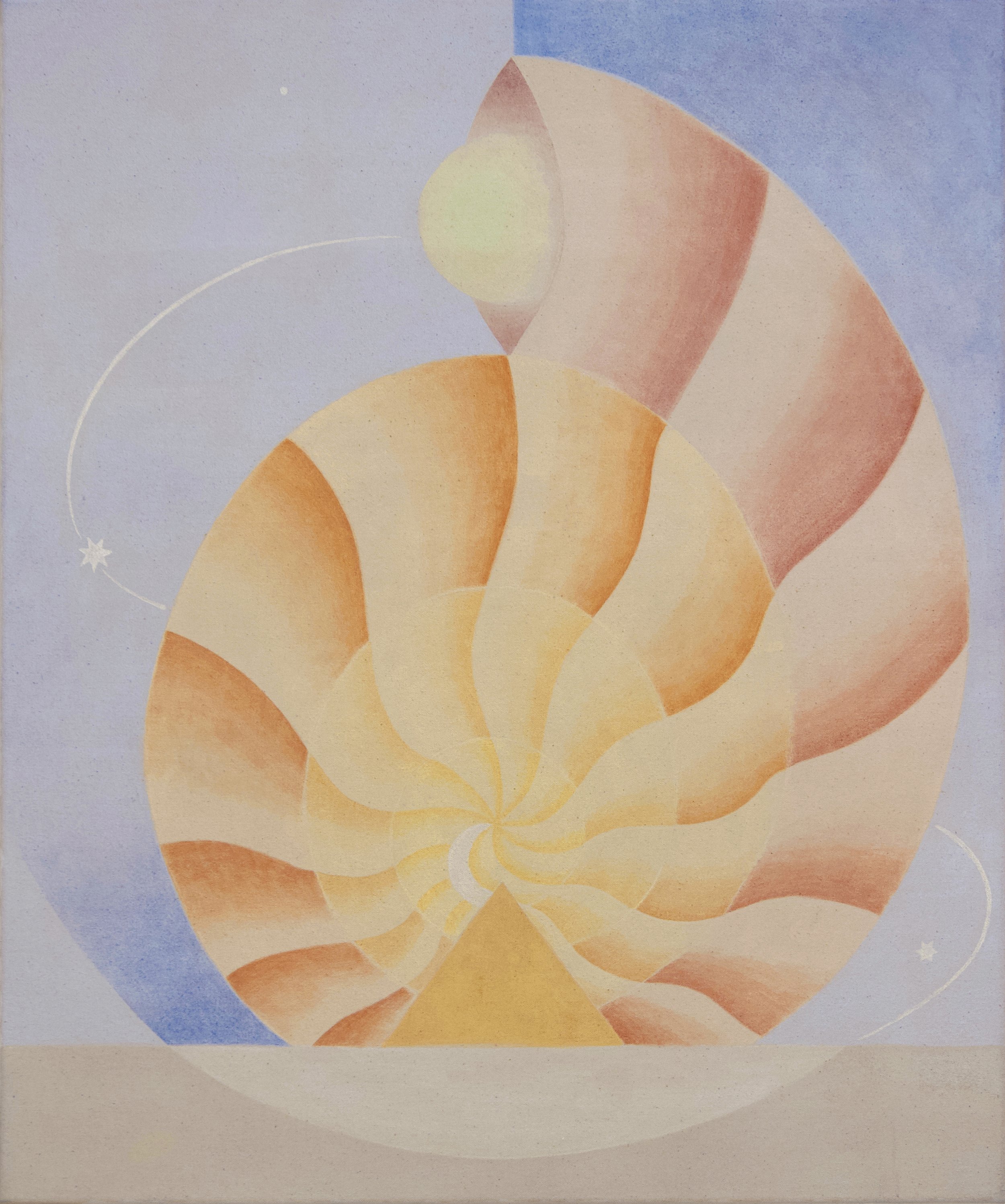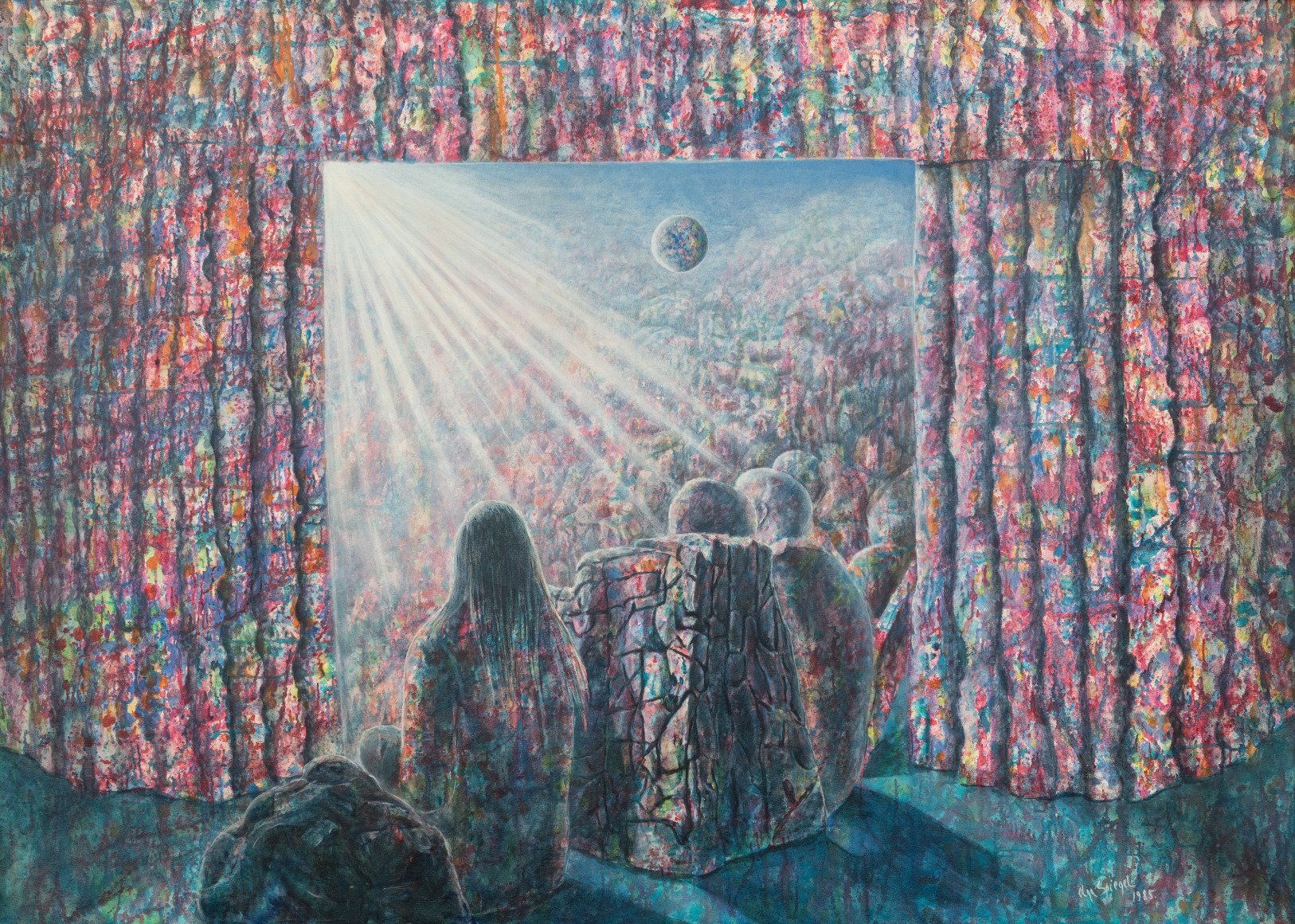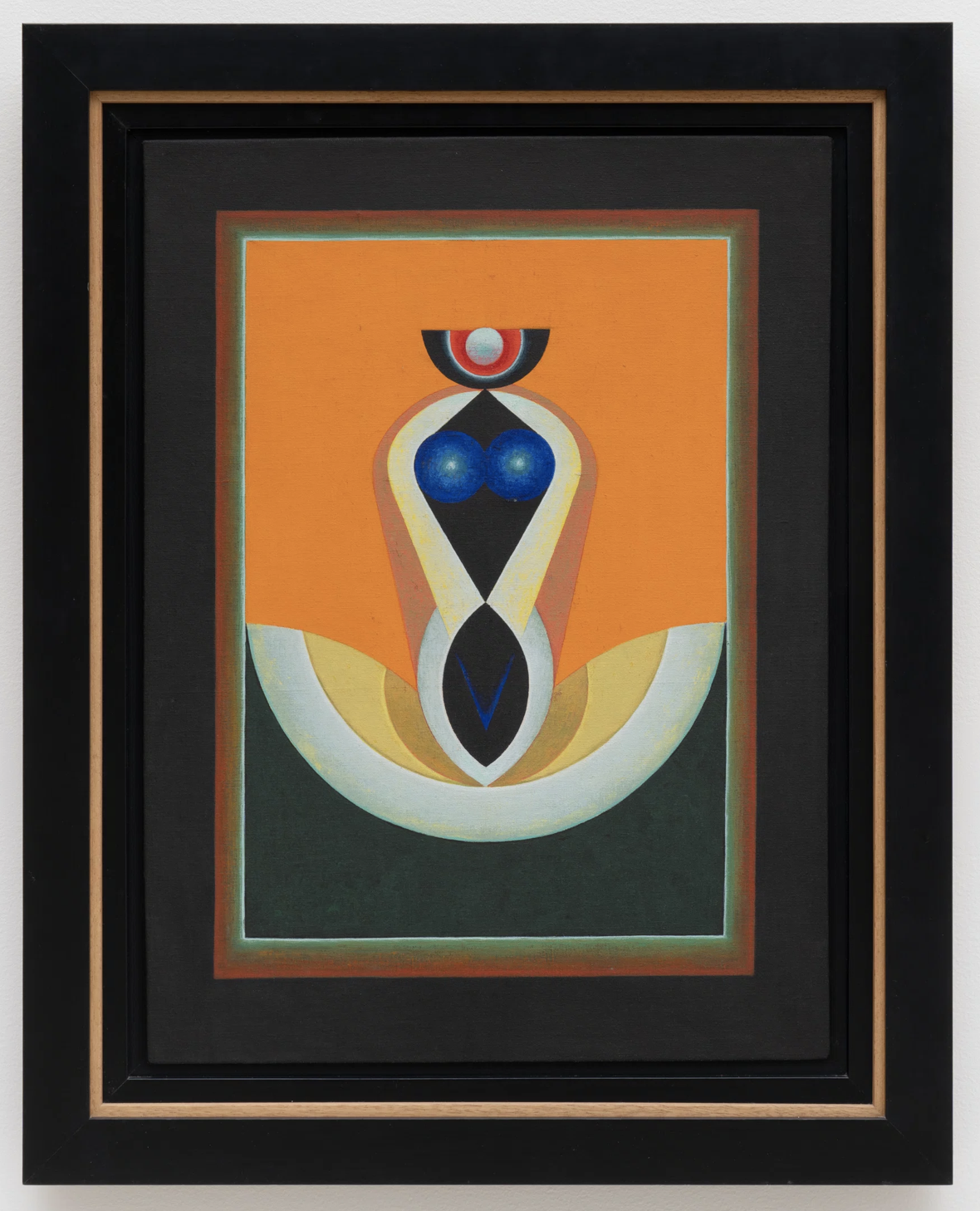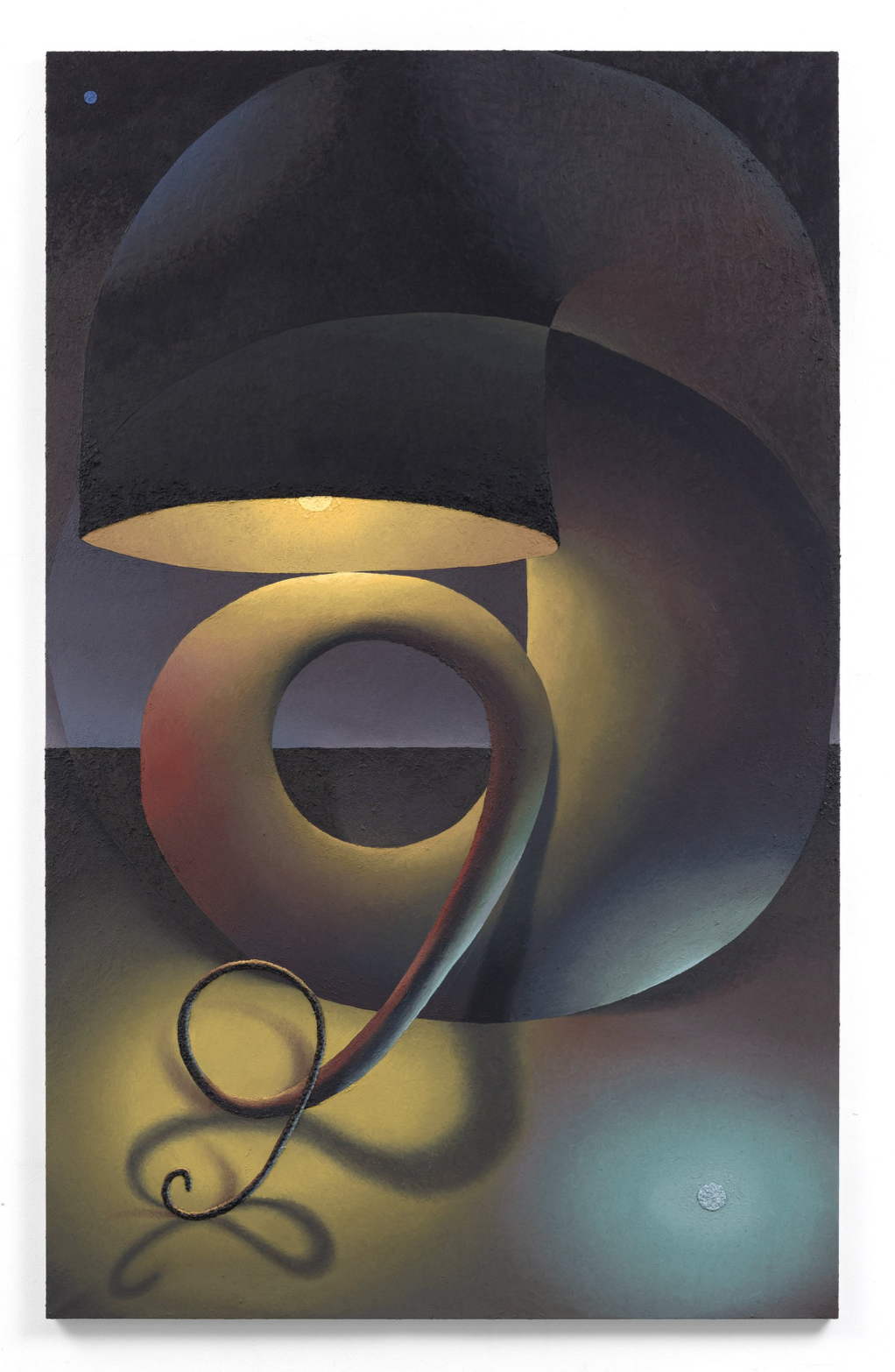Jess Cannon: Veils
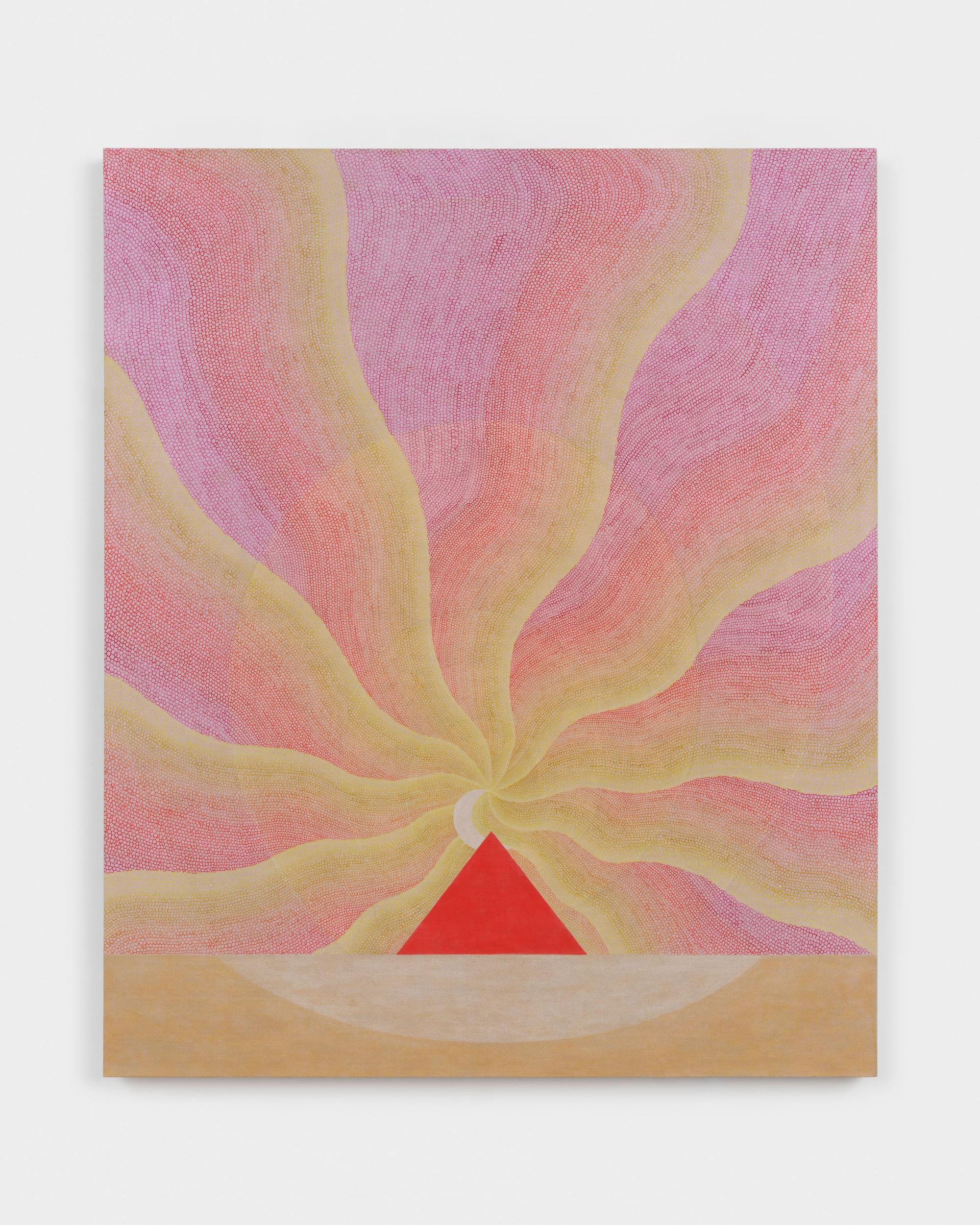

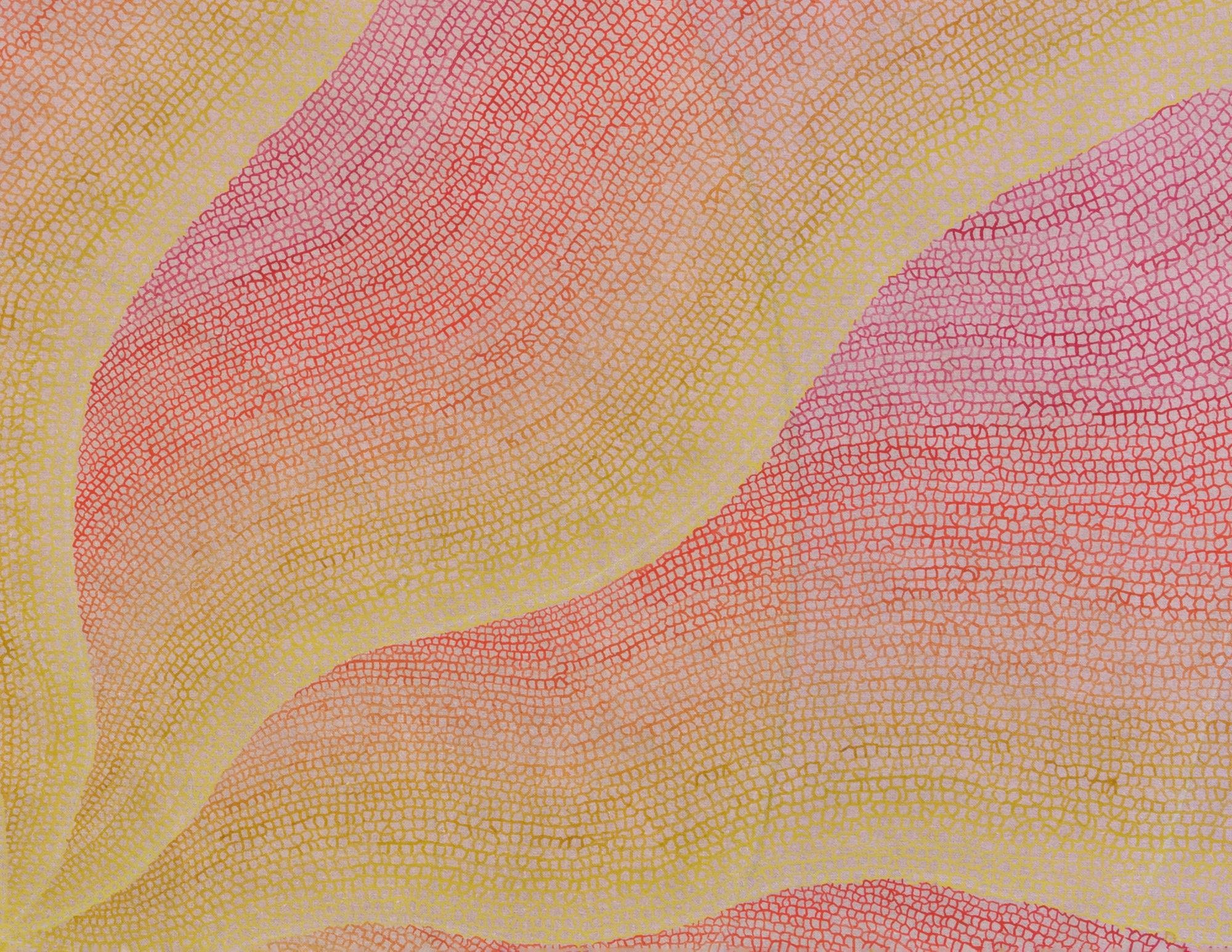
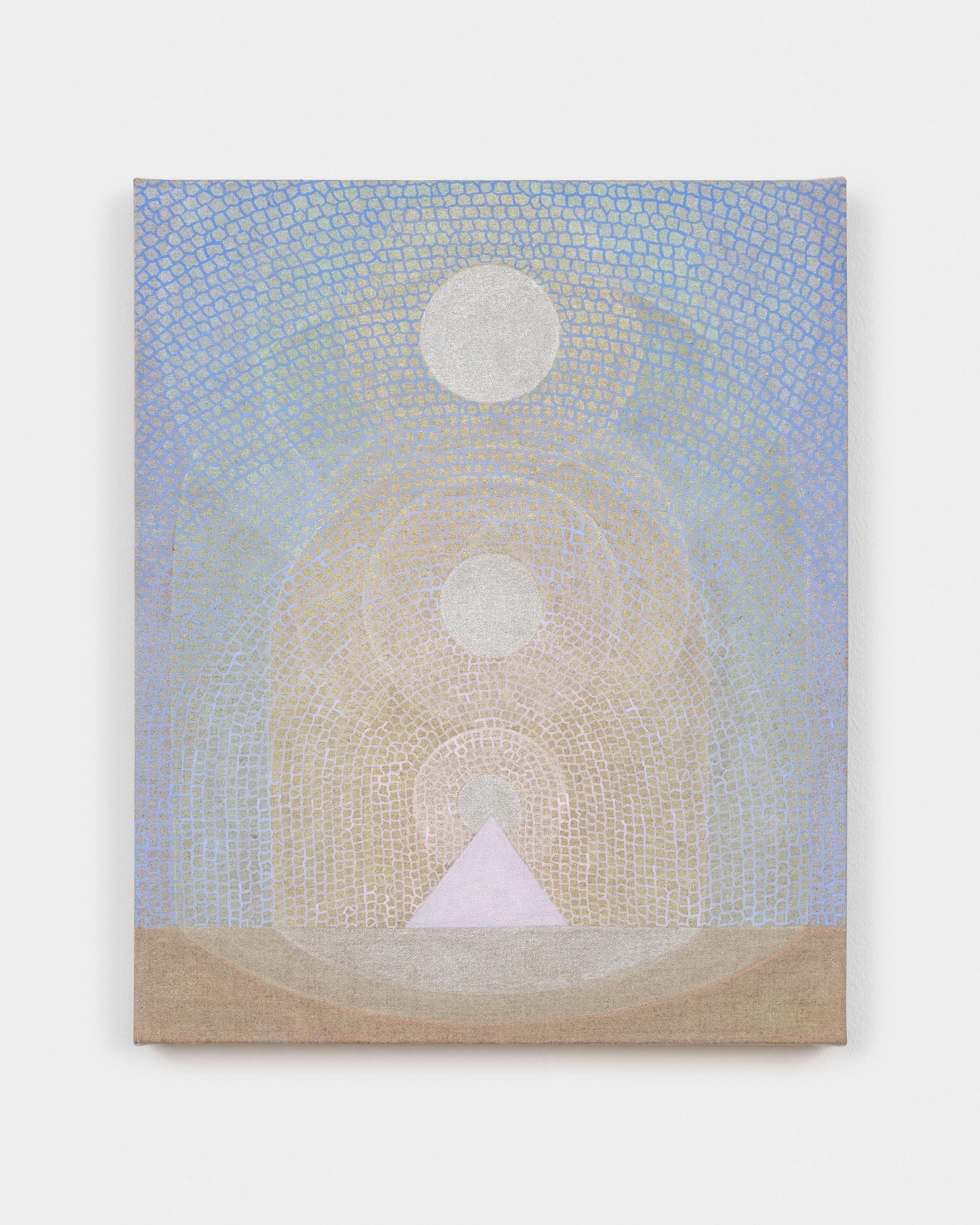
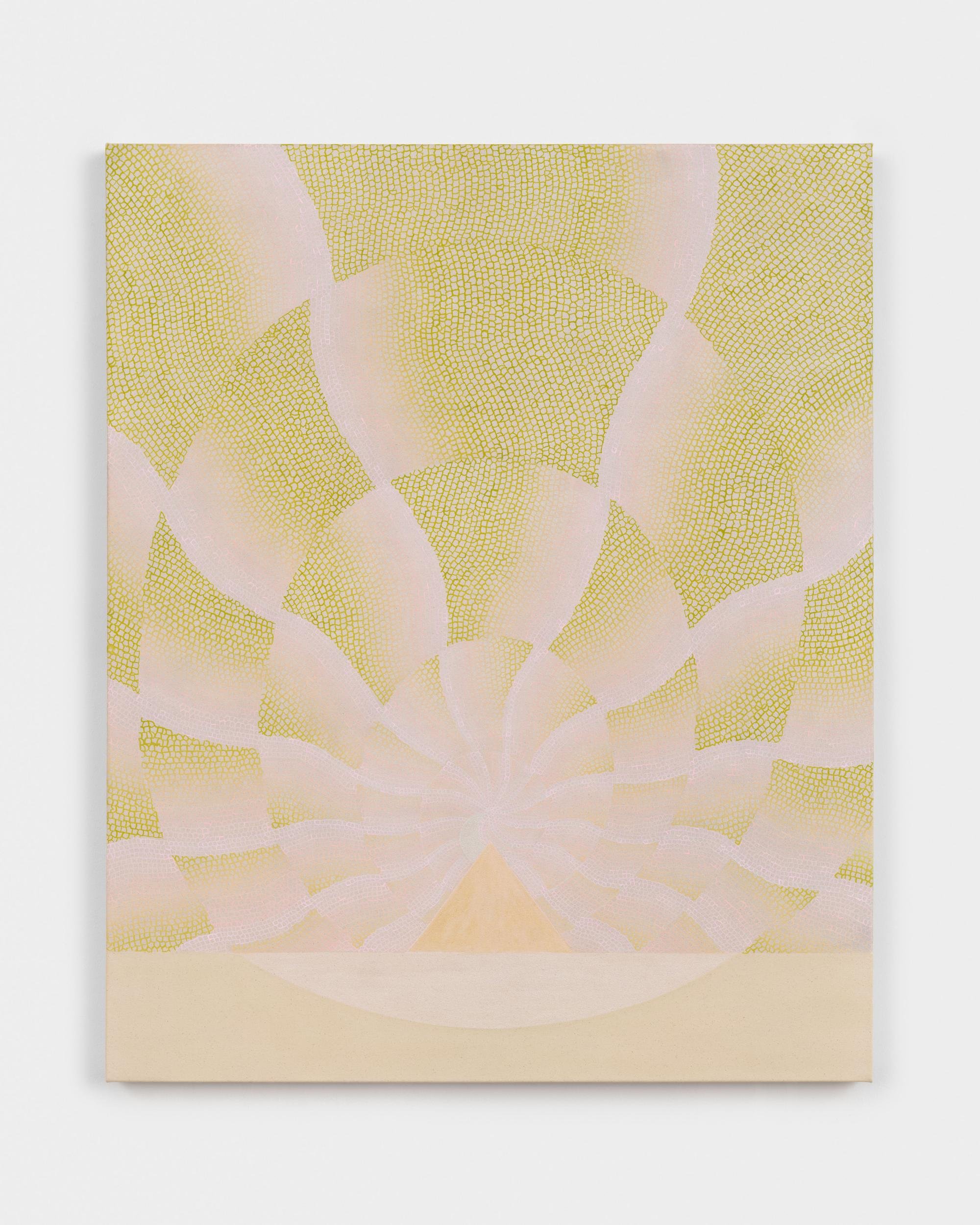
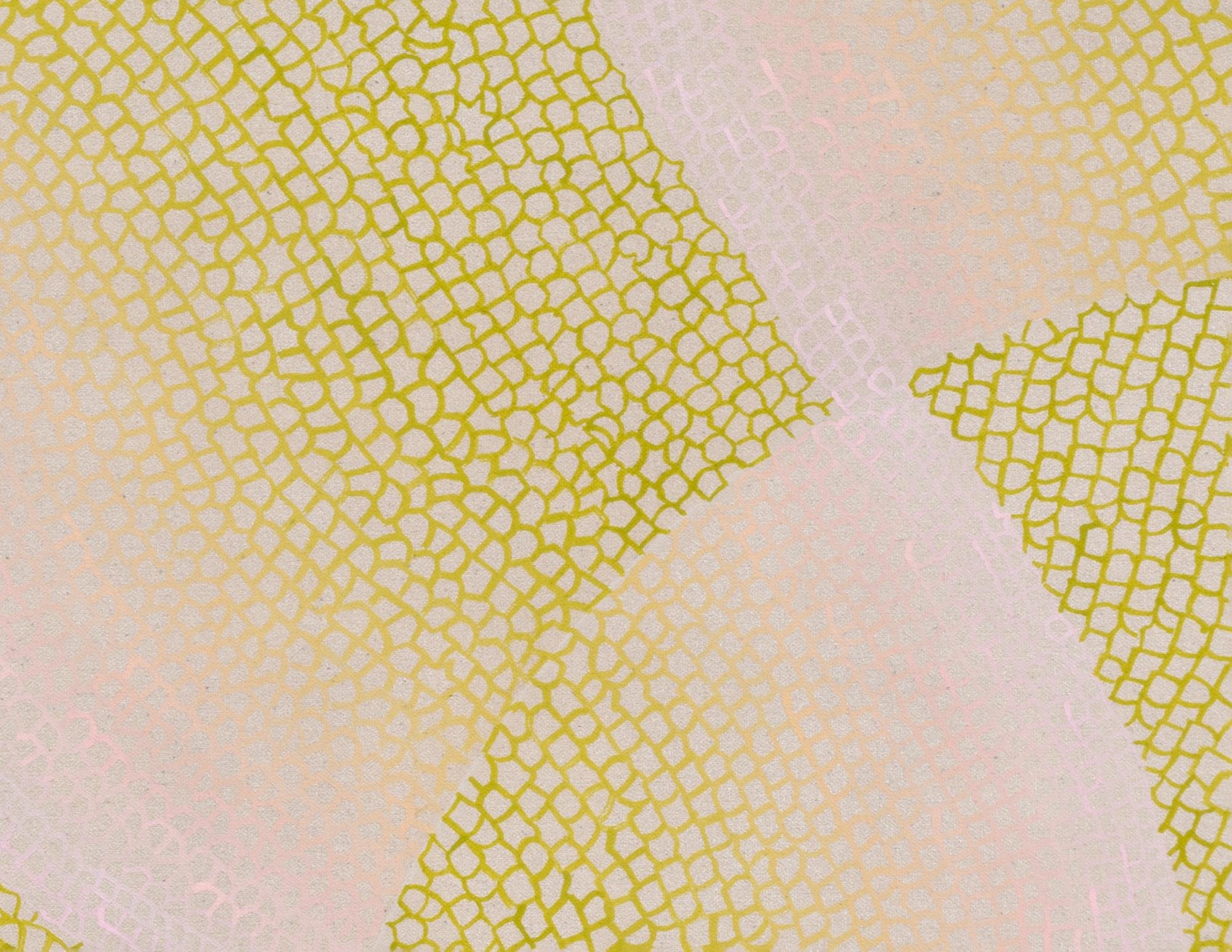
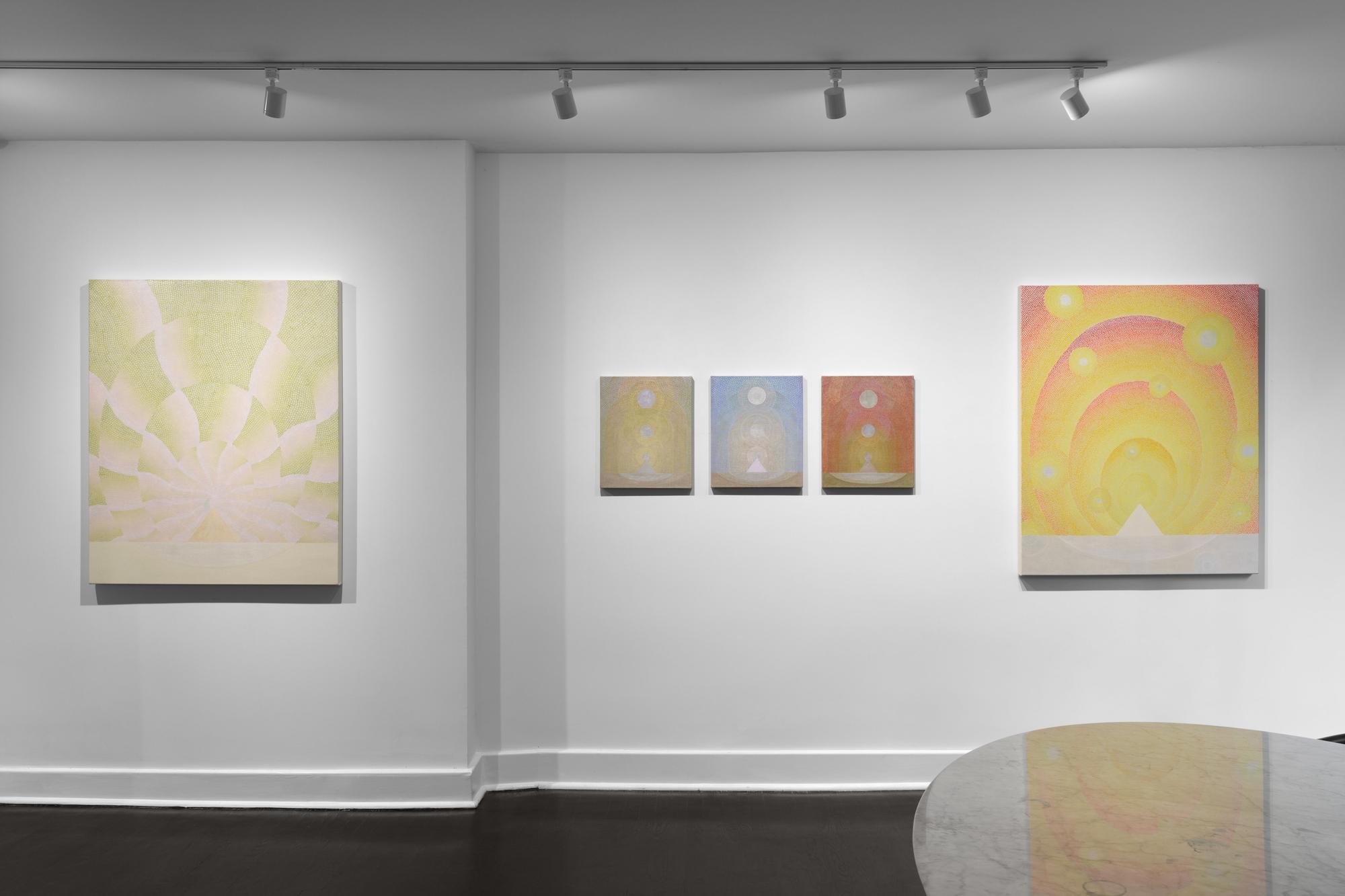
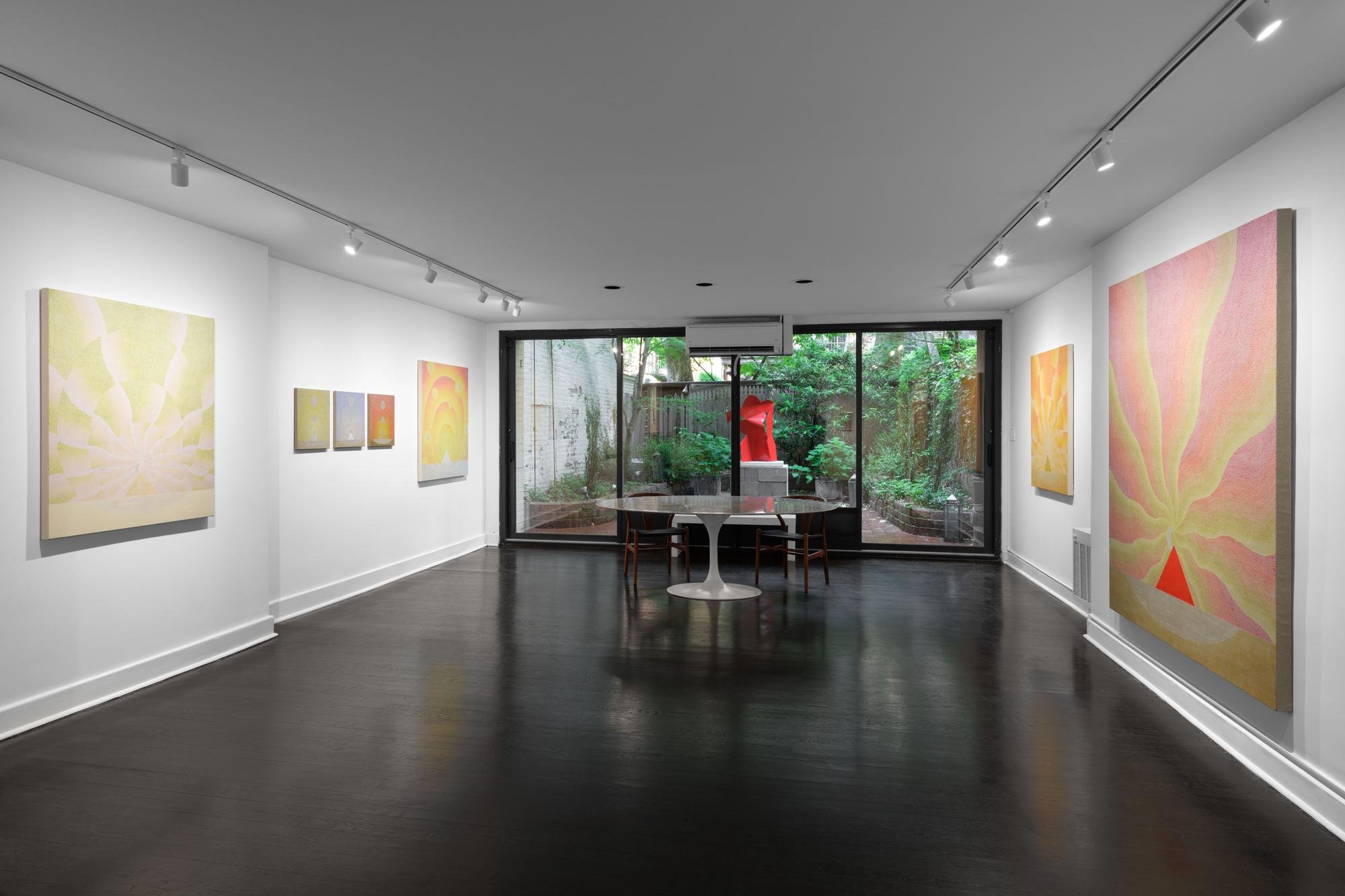

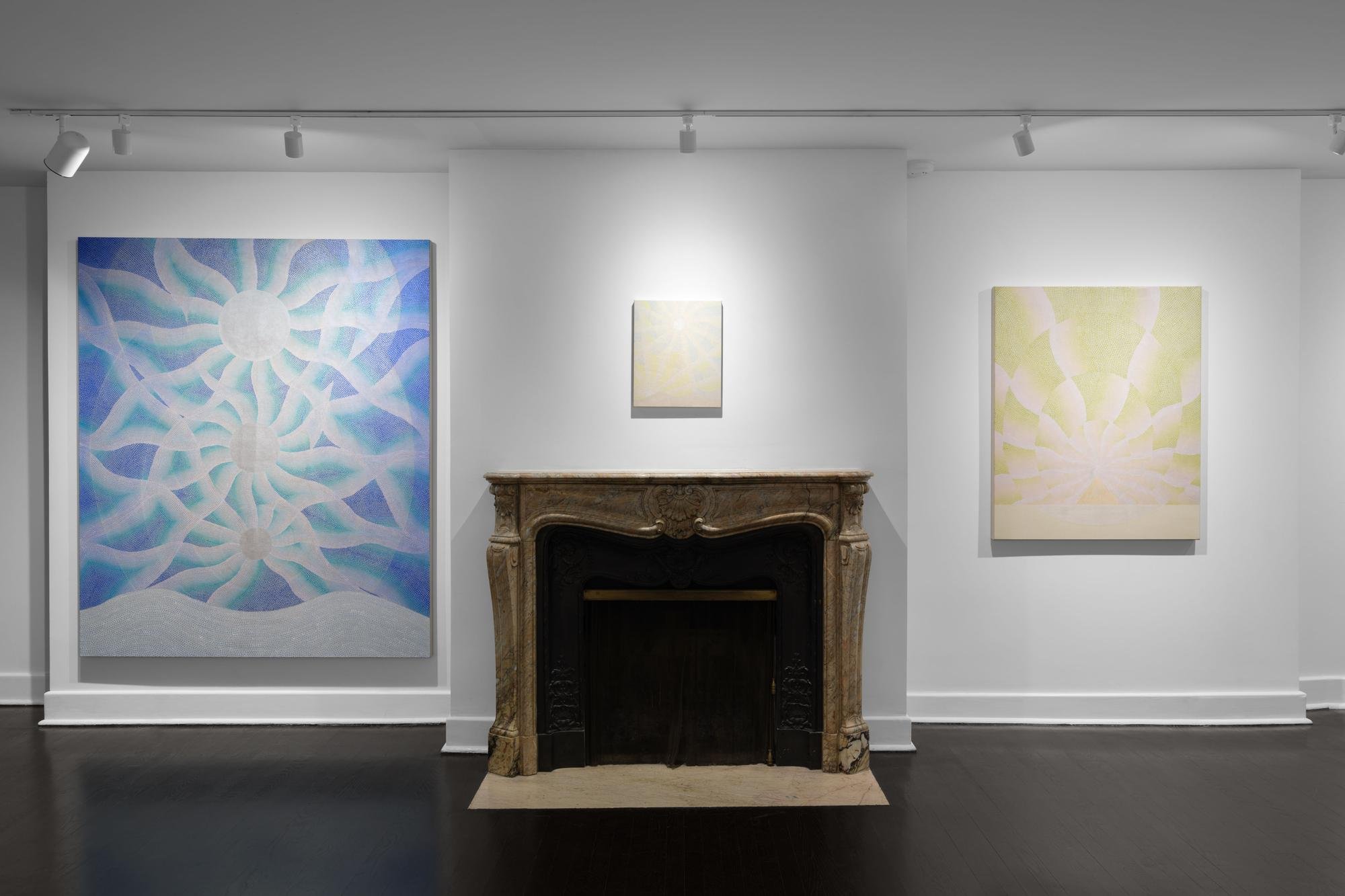
Jessica Cannon’s mystic landscapes confront time with a sense of ontological awe. She employs personal and symbolic language in concert with geometric motifs to depict the horizon and the space beyond it. For portions of the pandemic, Cannon traveled to New Mexico and Wyoming for residencies. During her time in the West, she experienced a sense of scale and vastness that she conveys in her intricate topographies of liminal spaces. Working with serial form, Cannon unearths celestial symbols of the infinite as she paints what she considers to be small icons and maps of consciousness.
Structured by spirals or triangles, the works that comprise this exhibition are mapped out in a way that is equal parts intuitive and mathematical. Dots—or rather little veils—are employed as a means of delineating negative space. Cannon presses into her canvas to create what might be cells, stars, or currents. These gestures allow her to play with the color and color gradients emerging from the underpainting, producing an undulating effect. Nighttime landscapes feature an especially rich, reverberant darkness and depth. The juxtaposition between the underpainting and what coats it creates a sense of space, but also a sense of light, as the underpaintings are iridescent.
Cannon’s preoccupation with a play on light within her work conjures Mary Corse’s subtle iridescent compositions. The title of Kim Conaty’s curatorial essay for Corse’s Whitney Museum retrospective was “Light + Space + Time,” three of Cannon’s central concerns. In it, she states:
The same work can appear dramatically different under varying light conditions and from alternate angles, a point that underscores Corse's intention to create both an active and subjective viewing experience. When photographed, the shifting surfaces of the paintings resist the instantaneity of the camera, thwarting any attempt at a single, accurate record.
In Cannon’s paintings, light is reflected in some parts and blocked in others, building tension; the iridescence emphasizes the active nature and ephemerality of seeing. Much in the way one experiences light in the natural world. Cannon uses light as an energy that illuminates; like sunshine pouring through stained glass.
Indeed, Cannon’s work is in dialogue with a rich tradition of women artists who have mined ideas of time and space through painting, notably Agnes Pelton and Agnes Martin, two painters famously associated with the Southwest. Pelton, a founding member of the Transcendental Painting Group, sought to “paint beyond the appearance of the physical world” and the meditative, highly repetitive nature of Cannon’s mark-making calls back to Martin. Cannon has also found inspiration and a kindred artistic development with Sonia Delaunay, especially as an artist who also found particular inspiration beyond the city, having relocated from Paris to the Spanish Coast. As Stanley Baron and Jacques Damase wrote in their collaborative biography of the artist:
It was living in the Iberian peninsula that opened [Sonia and Robert Delaunay’s] eyes to an entirely different light. As Sonia writes about it, she notes that all painters have studied light, but light placed against objects—a completely descriptive light—whereas she and Robert attacked the very origin of light, the sun and the moon themselves.
Much as stained glass was meant to teach, Cannon’s work conveys a feeling about the universe and how the edges around or perceptions of space and time warp and blur as we move through it. There is a sense of ritual and its beauty, no matter how obscure. We witness an attempt to delineate, to understand, and to simply surrender to wonder. These liminal spaces—shore lines and horizons—are where we confront the unknown and search for meaning and continuity, both beneath and beyond the sky’s dark shell. In these moments, macro and micro blur.
- Cara Marsh Sheffler


